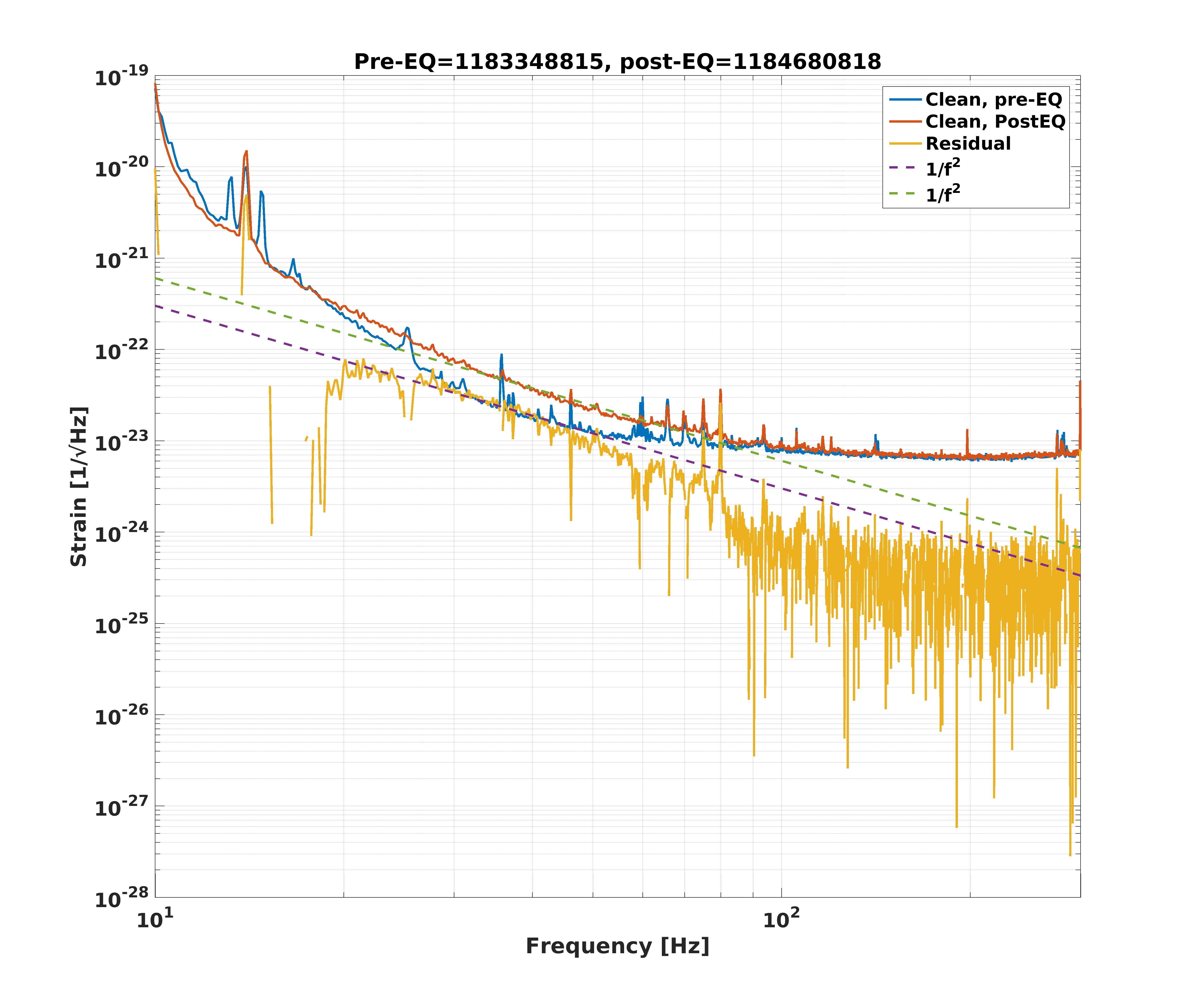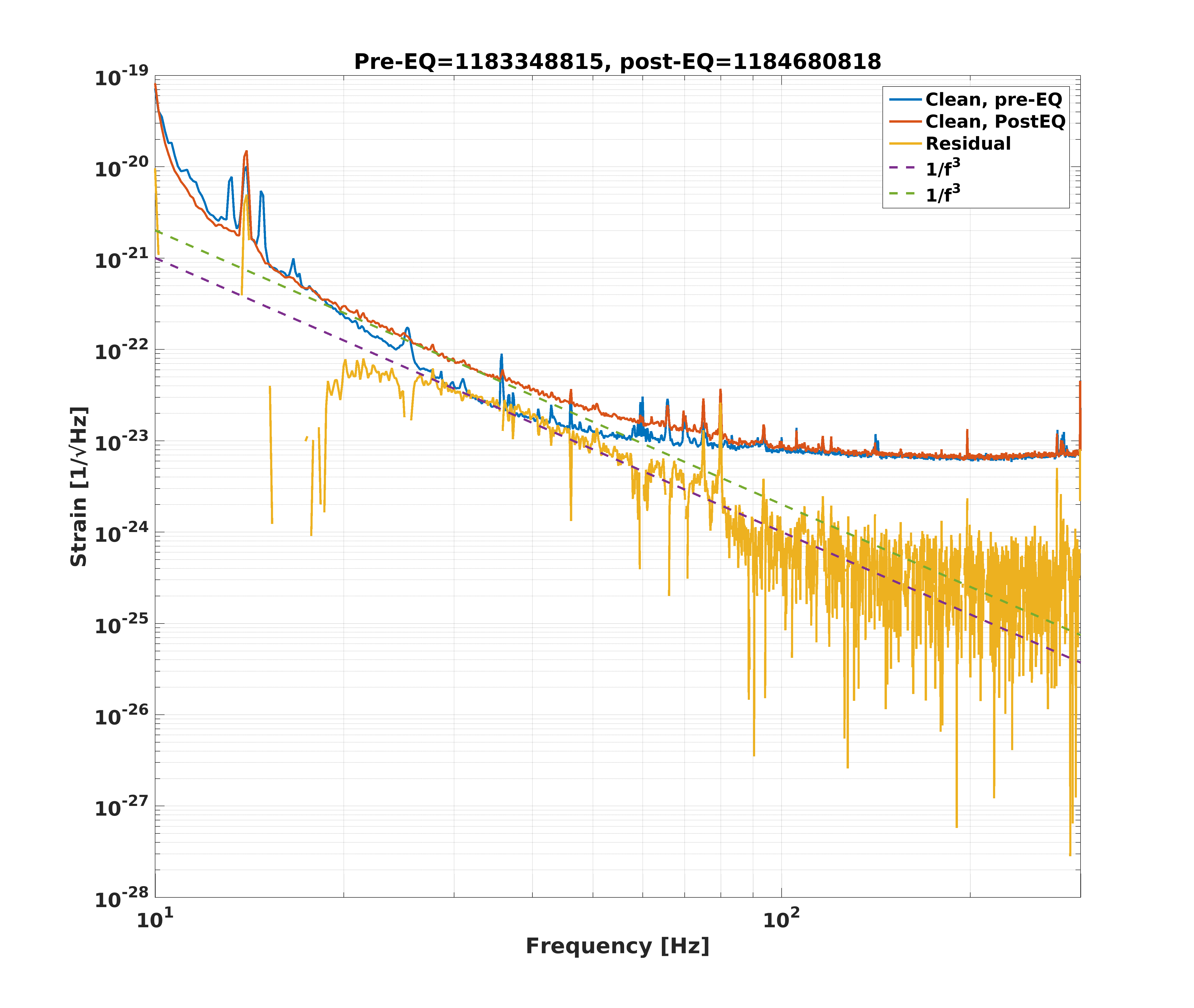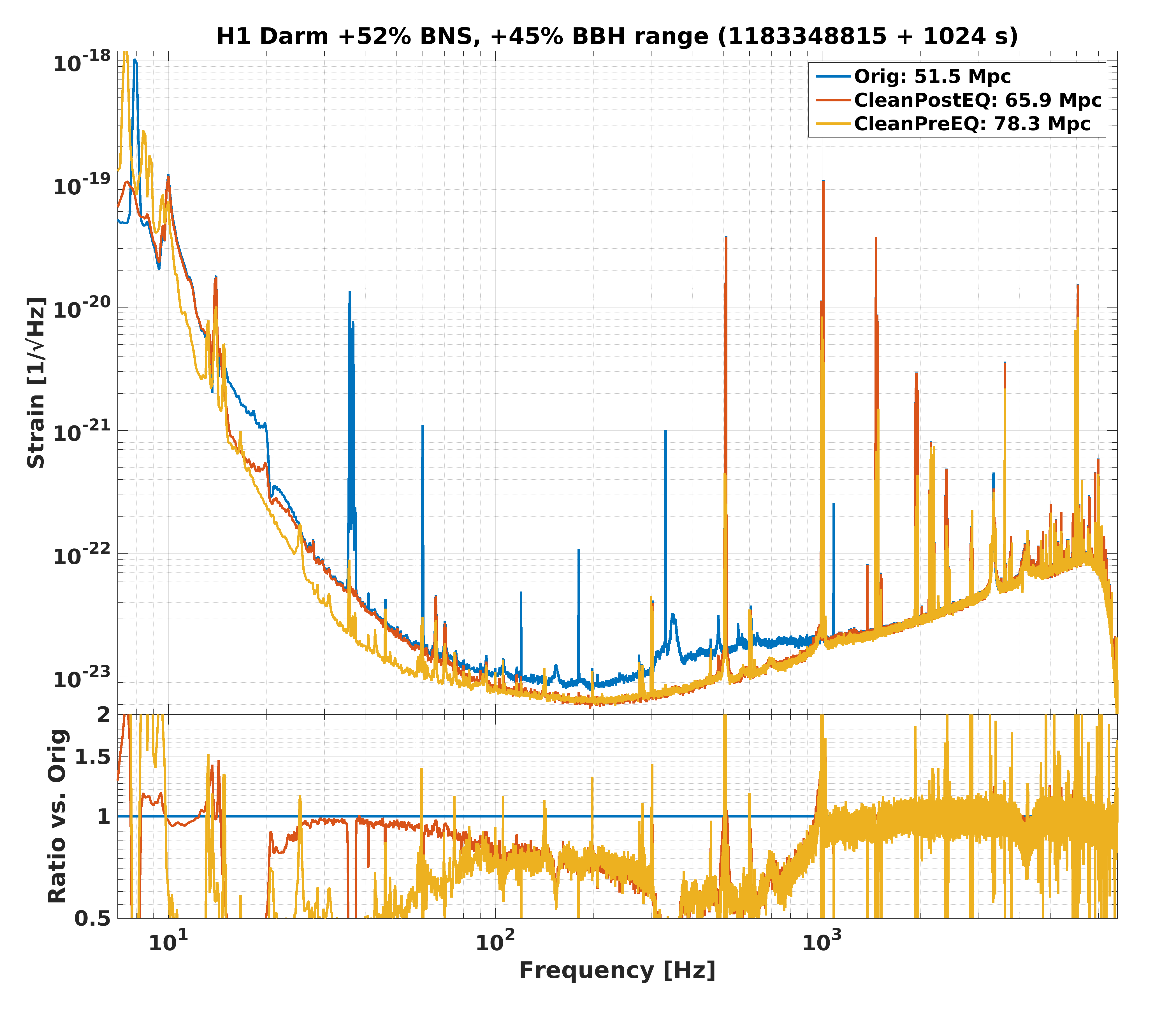...a data-heavy open notebook for ongoing post-disciplinary analysis of publicly-funded scientific experiments presented for public falsification, reinforcing transparency. All site-hosted and off-site data and original research may be freely distributed with proper citation. Requests to access additional resources incorporated into this work should be made to the blog author, who is fully responsible for this content except where credited otherwise. [last updated 2025-0824 UTC]
Search This Blog
20190121
GW170817
http://fulguritics.blogspot.com/2018/06/gw170817-occurs-at-green-bar.html
GW150914
http://fulguritics.blogspot.com/2018/06/progress-on-ligo-event-analysis-here.html
A challenging issue with correlated LIGO magnetic noise has been known for almost two decades, and LIGO has continued to publish articles discussing terrestrial magnetic noise as a persisting limiting factor for detection of a stochastic GW background. Issues with magnetometer placement and shortcomings are discussed as a rule in such papers. Globally-coherent magnetic noise has been found in cross-correlation between magnetometer data captured in Poland and North America: https://arxiv.org/pdf/1612.01102.pdf
Lags between observer-dependent group arrival and the scaling and morphology of putative sources for GW are also readily identified as those produced by the inter-detector line-of-sight thunderstorms absent in literature; others writing on the topic have somehow ignored these storms, or the notion of discharge signal superposition and extended high energy glows now known from thunderstorms, or that global pulsations are not rare and are the exception to arguments against Schumann resonance-linked waveguide enhancement of transverse magnetic modes.
http://fulguritics.blogspot.com/2018/06/blog-post.html
http://fulguritics.blogspot.com/2018/06/continent-wide-blitzortung.html
LIGO magnetometers still do not consider the Z-component in time evolution of local magnetic field at intervals < 1 minute. http://fulguritics.blogspot.com/2018/06/httpswww.html
There are excess correlations between LIGO event parameters and multiscaled-periodic physical systems that remain unexplained.
http://fulguritics.blogspot.com/2018/06/srchttpswww.html
http://fulguritics.blogspot.com/2018/06/a-days-work-in-excel-of-all-places.html
http://fulguritics.blogspot.com/2018/06/roger-penrose-penrose-2017-may-be.html
GW150914
http://fulguritics.blogspot.com/.../progress-on-ligo...
GW170817
http://fulguritics.blogspot.com/.../gw170817-occurs-at...
Time lag-coincident interdetector thunderstorm spatial frequency solutions identical to LIGO values, and calculated from LIGO bounds
http://fulguritics.blogspot.com/2018/06/blog-post.html
Excess parametric correlations indicating observer-dependent spectral modulation
http://fulguritics.blogspot.com/.../roger-penrose-penrose...
Synchronized global cloud-ground lightning for all seven peak sawtooth periods/GW events, extending the exact duration of controversial noise lags with identical features to purported GW signal
http://fulguritics.blogspot.com/.../continent-wide...
North American ground magnetometer data for UTC day of GW150914
http://fulguritics.blogspot.com/2018/06/httpswww.html
20190110
Compilation of space weather data for N=6 LIGO events during 25-day window from GW170729 through GW170823
[provisional] compilation of space weather and Solar data surrounding N=6 LIGO triggers from August 29, 2017 UTC to August 23, 2017 UTC, which includes all N=4 dredged events released December, 2018 found in GWTC-1: A Gravitational-Wave Transient Catalog of Compact Binary Mergers Observed by LIGO and Virgo during the First and Second Observing Runs
[click images to enlarge]
Coronal holes during N=6 LIGO GW triggers, from GW170729 to GW170823:
Sunspot counts and changes in count, with descriptive statistics, surrounding N=11 LIGO events






GOES X-ray flux data [https://www.swpc.noaa.gov/products/goes-x-ray-flux] around N=6 LIGO GW triggers, from GW170729 to GW170823






X-ray flare activity during N=6 LIGO GW triggers, from GW170729 to GW170823, with uncanny exact correlations in sunspot number and changes in number
Solar wind Z-component (red indicates substorm-active phases) during N=6 LIGO GW triggers, from GW170729 to GW170823
https://www.spaceweatherlive.com/en/archive












[click images to enlarge]
Coronal holes during N=6 LIGO GW triggers, from GW170729 to GW170823:
Sunspot counts and changes in count, with descriptive statistics, surrounding N=11 LIGO events






GOES X-ray flux data [https://www.swpc.noaa.gov/products/goes-x-ray-flux] around N=6 LIGO GW triggers, from GW170729 to GW170823






X-ray flare activity during N=6 LIGO GW triggers, from GW170729 to GW170823, with uncanny exact correlations in sunspot number and changes in number
Solar wind Z-component (red indicates substorm-active phases) during N=6 LIGO GW triggers, from GW170729 to GW170823
https://www.spaceweatherlive.com/en/archive






Speed of solar wind during N=6 LIGO GW triggers, from GW170729 to GW170823






Density of Solar wind during N=6 LIGO GW triggers, from GW170729 to GW170823
For O3, LIGO relaxed discovery criteria to include events that have a false alarm rate of >1 event/30 days. Magnetospheric sawtooth events [MSEs] occur on average once every 33 days (11 MSEs/yr; LIGO O1-O2 N=11 events for almost exactly 1 yr. quality data).
SNR<8 threshold is accepted for network candidates that have single detector triggers increased H1-L1 max. lag to 15 ms (~0.67 c), which is the default central tendency remnant spin rate found to be degenerate with other parameters, such as polarization, and is itself a measure of signal velocity that, if relaxed as such, implies that LIGO triggers commonly are accompanied by the effect of system feedback from GPS lock/clock reference errors, time code signal mismatch, indistinguishable signal/phase coherence in noise and lags between station datastream time codes, and further data quality issues.




Strength of interplanetary magnetic field (BT component of IMF) during N=6 LIGO GW triggers, from GW170729 to GW170823
For O3, LIGO relaxed discovery criteria to include events that have a false alarm rate of >1 event/30 days. Magnetospheric sawtooth events [MSEs] occur on average once every 33 days (11 MSEs/yr; LIGO O1-O2 N=11 events for almost exactly 1 yr. quality data).
SNR<8 threshold is accepted for network candidates that have single detector triggers increased H1-L1 max. lag to 15 ms (~0.67 c), which is the default central tendency remnant spin rate found to be degenerate with other parameters, such as polarization, and is itself a measure of signal velocity that, if relaxed as such, implies that LIGO triggers commonly are accompanied by the effect of system feedback from GPS lock/clock reference errors, time code signal mismatch, indistinguishable signal/phase coherence in noise and lags between station datastream time codes, and further data quality issues.
Excerpts from
GWTC-1: A Gravitational-Wave Transient Catalog of Compact Binary Mergers Observed by LIGO and Virgo during the First and Second Observing Runs, describing lacking multiple station triggers, failure for signal to NR template fit, and/or very low SNR:



Notice noise sources represented in the plot below do not imply electromagnetic noise and quantum fluctuations that couple to aLIGO components due to space weather and terrestrial response, which is possibly the most likely frequent cause of unexplained false triggers and exceptional coherent "glitches."
https://dcc.ligo.org/public/0127/G1601435/003/

 https://alog.ligo-wa.caltech.edu/aLOG/iframeSrc.php?authExpired=&content=1&step=&callRep=37685&startPage=&preview=&printCall=&callUser=&addCommentTo=&callHelp=&callFileType=#
https://alog.ligo-wa.caltech.edu/aLOG/iframeSrc.php?authExpired=&content=1&step=&callRep=37685&startPage=&preview=&printCall=&callUser=&addCommentTo=&callHelp=&callFileType=#






False LIGO trigger 170720 [Nitz et al. 2018 1-OGC: The first open gravitational-wave catalog of binary mergers from analysis of public Advanced LIGO data] was accompanied by reported unexplained noise in magnetometer, explained by critical space weather (with plots shown below from Spaceweatherlive.com; note also an earthquake in Montana is also mentioned, plausibly associated with excess sub-100 Hz 1/f noise), but not elaborated upon in any LIGO reference. Space weather and specific local or continenal magnetic conditions are, glaringly, never mentioned by LIGO representatives in communications or in papers post-GW150914, and all questions addressed to LIGO scientists regarding foreground contamination are merely deferred onto Gravity Spy, the so-called LIGO "Glitch Group," or to a selection of papers that do not attempt to explore such questions, systems, and coupling issues at all without prior assumption of independence between template-fit contents and structured/colored quasiperiodic noise, in this case 1/f noise:
 https://alog.ligo-wa.caltech.edu/aLOG/iframeSrc.php?authExpired=&content=1&step=&callRep=37685&startPage=&preview=&printCall=&callUser=&addCommentTo=&callHelp=&callFileType=#
https://alog.ligo-wa.caltech.edu/aLOG/iframeSrc.php?authExpired=&content=1&step=&callRep=37685&startPage=&preview=&printCall=&callUser=&addCommentTo=&callHelp=&callFileType=#




Subscribe to:
Comments (Atom)



























